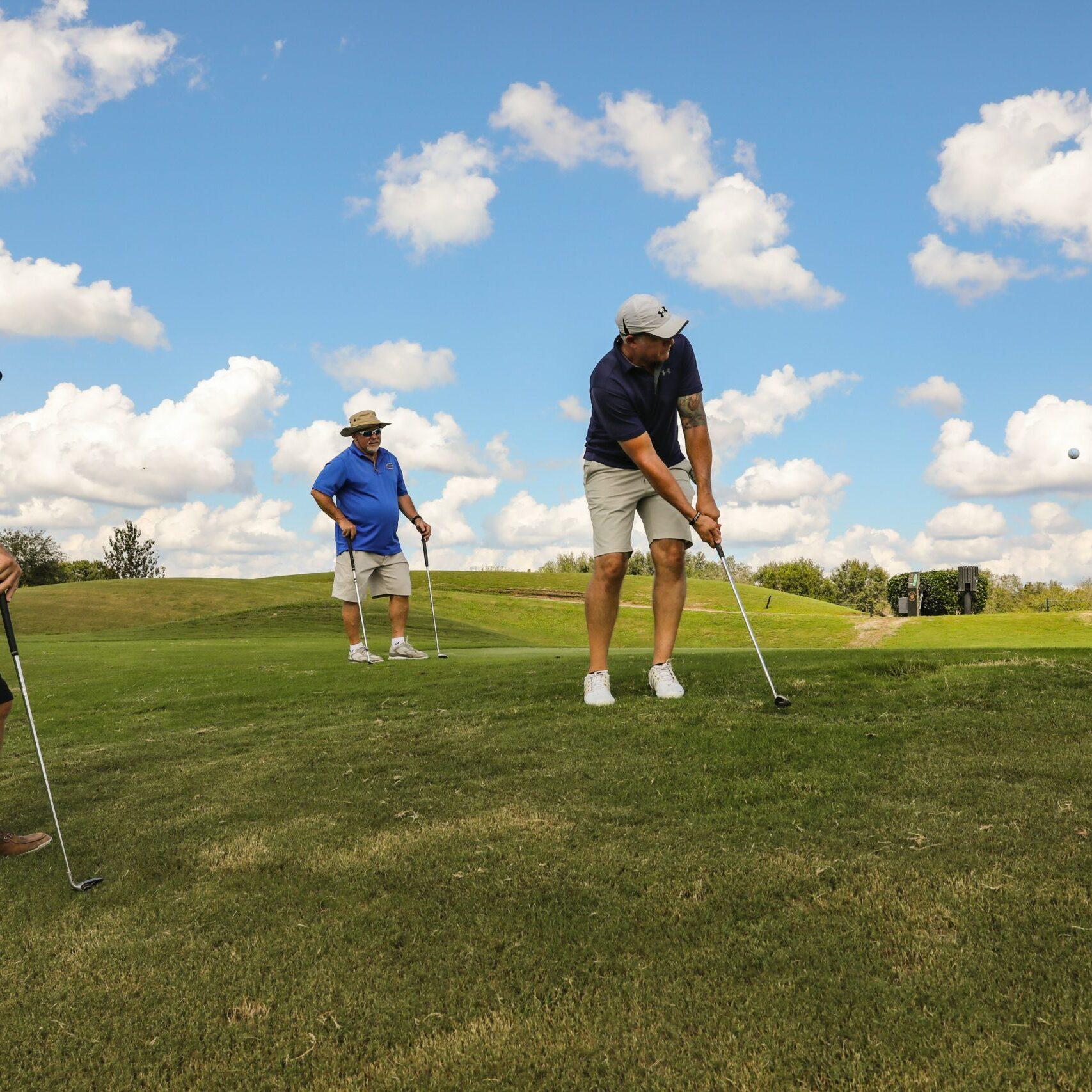In the realm of golf, where precision and finesse converge, Gene Sarazen’s indelible mark remains as a testament to his mastery and insights into the intricacies of the swing. His profound understanding of the game’s fundamentals has left an enduring legacy, shaping the techniques and strategies of generations of golfers. This article delves into the essence of Gene Sarazen’s golf lessons, meticulously examining the principles that underpin his approach to the sport. Through a rigorous exploration of his teachings, we endeavor to unlock the dynamics of the golf swing, empowering players to achieve enhanced performance and elevate their game to new heights.
– The Mechanics of Impact: Analyzing Sarazens Swing Principles for Precise Ball Striking
The Mechanics of Impact: Analyzing Sarazen’s Swing Principles for Precise Ball Striking
Weight Shift and Momentum Transfer:
At impact, Sarazen’s weight is fully shifted to the left foot, allowing his momentum to drive through the ball effectively. This weight transfer creates optimal clubface alignment, enabling him to launch the ball with precise direction and accuracy.
Hand-Eye Coordination:
Sarazen’s exceptional hand-eye coordination plays a crucial role in impact accuracy. His grip secures the club loosely enough for the hands to release naturally at the right moment, ensuring a consistent point of contact with the ball. This precise timing translates into crisp, solid strikes that consistently find the intended target.
Impact Zone Factors:
Sarazen emphasizes the importance of a flattened left wrist, angled slightly downward, at impact. This wrist position enables a clean, downward strike on the ball without excessive spin. Additionally, his head remains relatively still throughout the swing, promoting stability and control at the point of contact.
– Optimizing Balance and Stability: Foundation for a Repeatable Golf Swing
Balance and stability form the foundation of a repeatable golf swing, ensuring consistent ball strikes and greater accuracy.
To optimize balance, maintain a wide stance with feet shoulder-width apart. Distribute weight evenly on both legs, allowing for a stable base. Keep the spine straight and core engaged to prevent sway or side motion. The head should be held level, gaze focused on the target.
During the swing, focus on maintaining a controlled weight transfer from the backswing to the downswing. As the club is taken back, shift weight smoothly to the back foot, then transition it gradually to the front foot as the club descends. This seamless weight transfer enables a balanced and stable swing, promoting power and consistency.
| Balance and Stability Drills | Benefits |
|—|—|
| Static Balance: Stand on one leg for 30 seconds, alternating legs. | Improves stability and ankle strength. |
| Dynamic Balance: Walk forward and backward while balancing a golf club on the head. | Develops dynamic balance and coordination. |
| Weight Transfer Drill: Stand with a golf ball between the feet. Practice shifting weight from back to front smoothly, keeping the ball from rolling. | Enhances weight transfer control for a stable swing. |
– Unraveling the Rhythm and Timing of Sarazens Swing
Unraveling the Rhythm and Timing of Sarazen’s Swing
Gene Sarazen’s iconic swing was characterized by its rhythm and timing. His ability to find a harmonious flow allowed him to generate consistent power and accuracy.
Rhythm and Tempo: Sarazen’s swing was characterized by a smooth, fluid rhythm. He maintained a steady tempo throughout the backswing, downswing, and follow-through. This rhythmic motion allowed him to control the timing of his swing and ensure that all segments of the body moved in sync.
Weight Transfer: Sarazen’s weight transfer played a crucial role in his swing dynamics. During the backswing, he smoothly shifted his weight to his right side, then seamlessly transferred it back to his left side during the downswing. This fluid weight transfer helped him generate momentum and maintain balance throughout the swing.
| Phase of Swing | Weight Distribution |
|—|—|
| Backswing | 60% right, 40% left |
| Downswing | 40% right, 60% left |
| Impact | 50% right, 50% left |
| Follow-Through | 20% right, 80% left |
* Sequencing: Sarazen’s swing followed a precise sequence of movements. His backswing was characterized by a slight delay at the top, followed by a gradual transition to the downswing. The downswing was initiated with a crisp, unhurried motion, ensuring maximum power and control.
– Essential Grip Techniques: Maximizing Control and Efficiency
Essential Grip Techniques: Maximizing Control and Efficiency
The secret to a controlled golf swing lies in the grip. Here are three essential grip techniques to enhance your swing dynamics and performance:
1. Find Your Natural Fit:
There is no one-size-fits-all grip. The best grip depends on your hand size, finger length, and swing style. Hold the club in your left hand with your fingers interlocking your right-hand thumb. Adjust the position of your hands until you feel a natural and comfortable grip.
2. Maintain a Neutral Wrist:
A neutral wrist prevents unwanted wrist action during the swing. Keep your wrists straight and slightly angled towards the target. This provides stability and allows for a smoother, more consistent swing. Avoid cupping or releasing your wrists excessively as this can lead to slices or hooks.
3. Control Pressure:
Grip pressure:
- Too light: Loss of control, inconsistent shots
- Too tight: Tension, reduced swing speed, restricted movement
Thumb pressure:
- Too much: Weakened grip, open clubface
- Too little: Strong grip, closed clubface
Experiment with different grip pressures to find the optimal balance that provides both control and freedom of movement during your swing.
– Advanced Footwork Patterns: Unlocking the Dynamics of Power and Accuracy
Advanced Footwork Patterns: Unlocking the Dynamics of Power and Accuracy
Just as with the backswing, the footwork involved in the downswing is crucial for generating power and accuracy. By understanding and practicing advanced footwork patterns, golfers can unlock the full potential of their swing.
One important aspect of advanced footwork patterns is the ability to shift weight effectively. During the downswing, the weight should transfer from the back foot to the front foot at the correct time and with the correct motion. This weight shift helps to generate power and create the proper swing path.
Additionally, footwork patterns should be tailored to the individual golfer’s height, reach, and swing characteristics. The width of the stance, the alignment of the feet, and the timing of the weight shift can all be adjusted to optimize performance. Professional instructors can provide individualized guidance to help golfers identify the best footwork patterns for their unique needs.
Conclusion
This article has presented an in-depth analysis of Gene Sarazen’s groundbreaking golf lessons, emphasizing their transformative impact on swing dynamics and performance. Sarazen’s emphasis on fundamental principles, such as grip, stance, and swing plane, created a firm foundation for aspiring golfers.
His unique approach, characterized by rhythmic movement and seamless transitions, allowed players to develop a consistent and repeatable swing. Through a combination of drills and exercises, Sarazen guided students to unlock their full potential, enhancing their accuracy, distance, and overall golf experience.
The legacy of Sarazen’s golf lessons continues to influence the game today, providing a timeless reference for golfers of all levels seeking to improve their skills. His contributions to the sport have left an enduring mark, inspiring countless golfers to achieve greater success through the pursuit of technical excellence.





